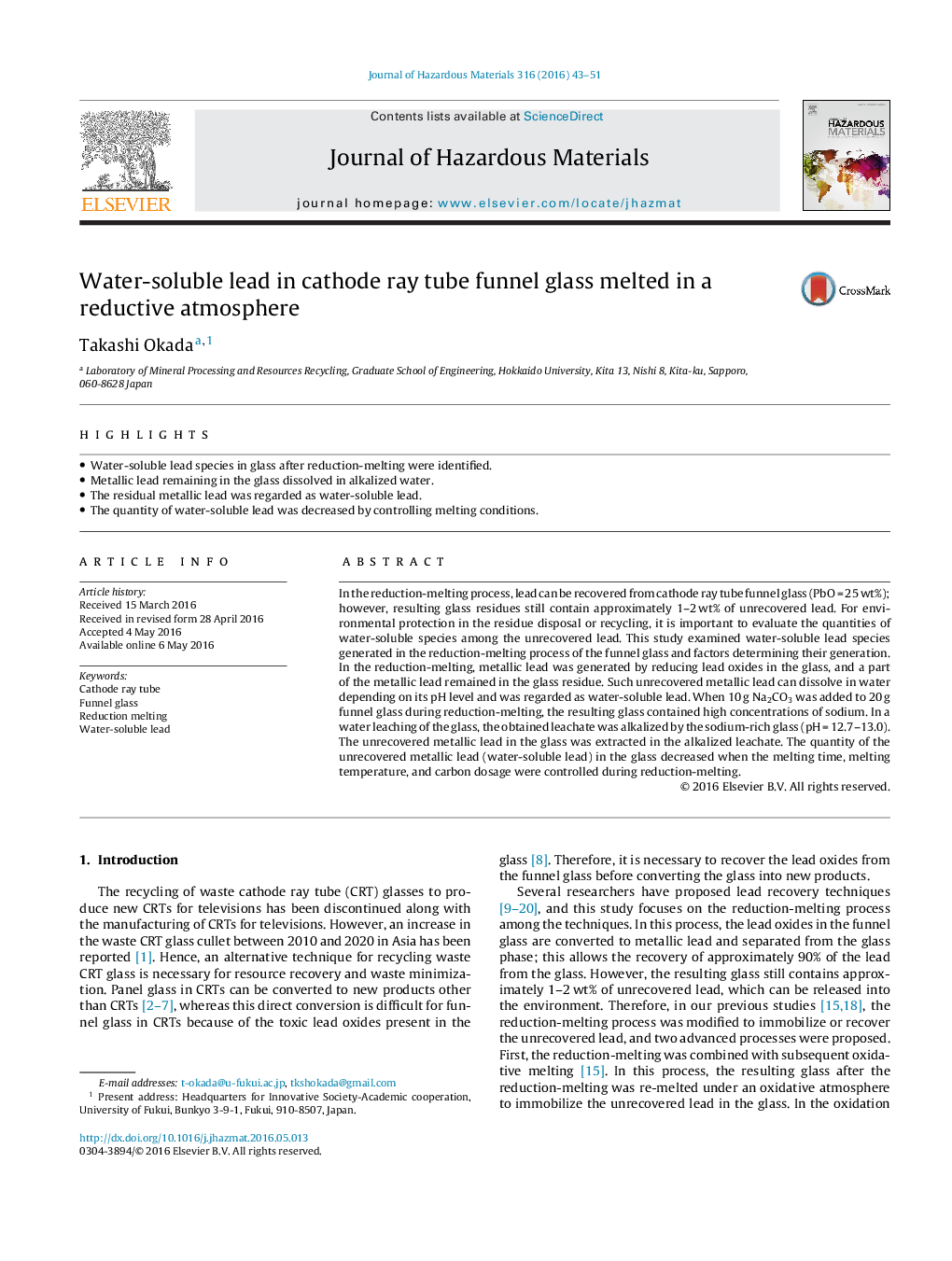| Article ID | Journal | Published Year | Pages | File Type |
|---|---|---|---|---|
| 6970190 | Journal of Hazardous Materials | 2016 | 9 Pages |
Abstract
In the reduction-melting process, lead can be recovered from cathode ray tube funnel glass (PbOÂ =Â 25Â wt%); however, resulting glass residues still contain approximately 1-2Â wt% of unrecovered lead. For environmental protection in the residue disposal or recycling, it is important to evaluate the quantities of water-soluble species among the unrecovered lead. This study examined water-soluble lead species generated in the reduction-melting process of the funnel glass and factors determining their generation. In the reduction-melting, metallic lead was generated by reducing lead oxides in the glass, and a part of the metallic lead remained in the glass residue. Such unrecovered metallic lead can dissolve in water depending on its pH level and was regarded as water-soluble lead. When 10Â g Na2CO3 was added to 20Â g funnel glass during reduction-melting, the resulting glass contained high concentrations of sodium. In a water leaching of the glass, the obtained leachate was alkalized by the sodium-rich glass (pHÂ =Â 12.7-13.0). The unrecovered metallic lead in the glass was extracted in the alkalized leachate. The quantity of the unrecovered metallic lead (water-soluble lead) in the glass decreased when the melting time, melting temperature, and carbon dosage were controlled during reduction-melting.
Keywords
Related Topics
Physical Sciences and Engineering
Chemical Engineering
Chemical Health and Safety
Authors
Takashi Okada,
